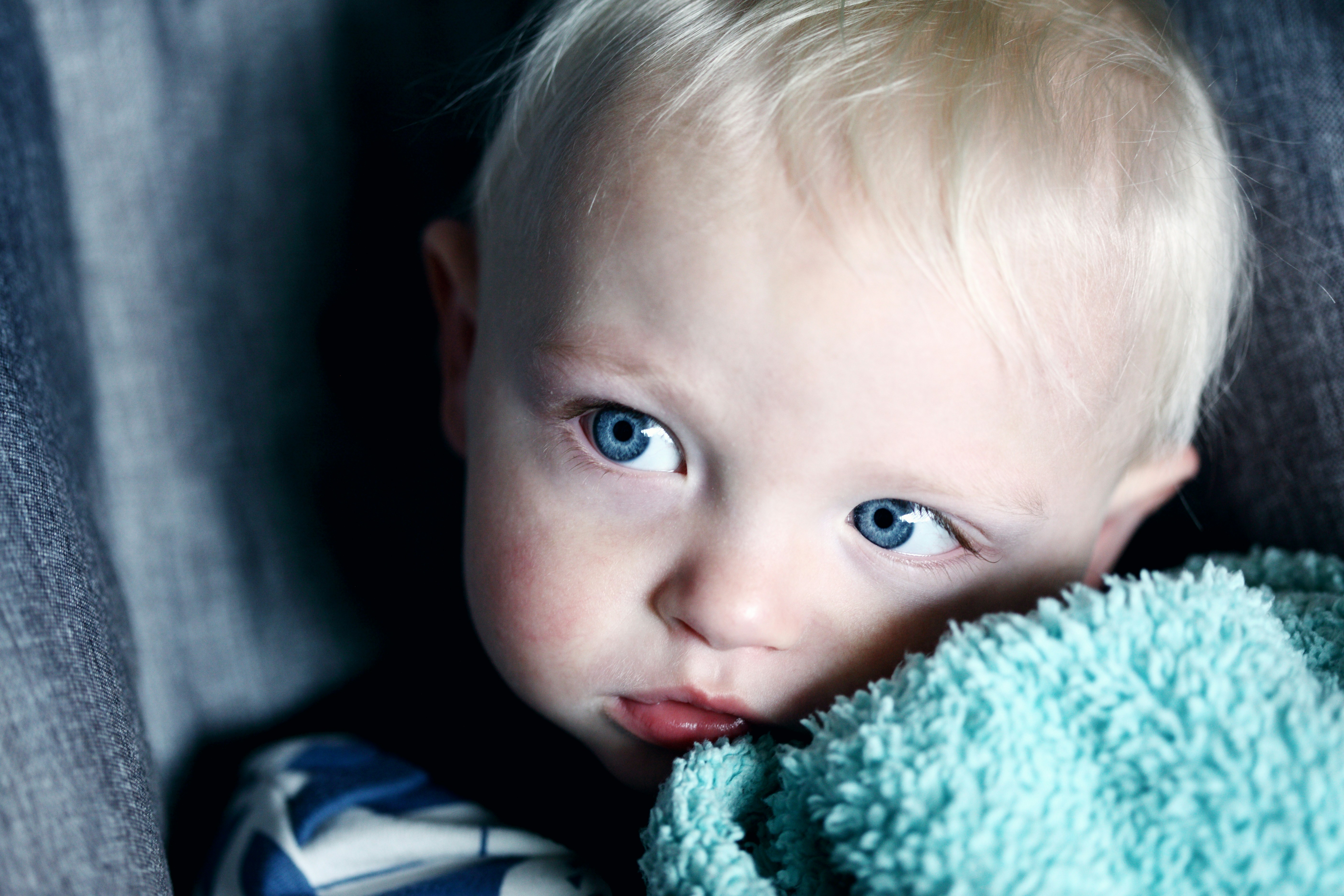To Calm Big Feelings, Validate Them
March 06, 2021

It was a Sunday afternoon when my then 5-year-old son first asked to go out into the front yard to have a go at his new tee-ball set. I imagine, as he drew the bat back and blasted away, he expected a pretty spectacular hit. If not exactly the kind of dinger that is only possible with the help of metabolic steroids, then at least something better than the unimpressive, well, flop that the little plastic ball did just a few feet from the tee. My son howled in anger and disappointment. In a nanosecond, my brain had produced a few possible responses: I could tell him that his body hadn't been lined up right, that his grip was off, and, in short, that he should cool it, it wasn't a big deal — we could just try again.
Fortunately, that weekend I had been at a family therapy training, and that very day my teacher reminded us that parents should always "validate before you educate." In seconds, I shifted from wanting to fix or control his reaction to just seeing my son was angry and disappointed. Of course he was! Who isn't frustrated when they want to do something and it doesn't go right? So I said, "You're mad! You wanted the ball to go far, and it didn't, and you're really frustrated! That makes sense. I'd be frustrated, too!" He looked at me as my words slowly percolated down. In about ten seconds, the wave of emotion had passed and he was ready to come back to the ball and bat, ready for my basic pointers about his at-bat form. He got the basics of baseball that day, but I was the one that learned the lesson.
This memory comes back to me often when I talk to my clients about the importance of validating emotions — for themselves, for their partners, for their children. Not because I've since been perfect in my validation as a partner and parent — sadly, my validation batting average is…not exactly 1.000. No, this is the memory that epitomizes how magical validation is, how deeply important and, well, efficient it is. A new study out of Ohio State University affirms what my family therapy teacher was saying that day: invalidating feelings makes them worse and makes it harder to feel better. In the study, only participants who were validated reported their mood went back to normal after recalling an event that made them angry. Invalidated participants found that their moods continued to decline.
Many of us are uncomfortable with core feelings like sadness, anger, fear, and even joy — often because our caregivers were similarly uncomfortable with them or because someone's out of control anger, fear, or sadness created a dangerous climate for us in the past. So, naturally, when faced with our partner's anger or our sister's sadness in the present day, we try to move away from it. Afraid it'll get bigger, grow out of control if we give it attention or imagine ourselves in their shoes. This was what fueled my (wrong) instinct to tell my son how to fix it, or try to talk him out of his angry feelings. The science is clear that if I'd done that, I would have made him angrier for longer and caused damage both to our relationship and his trust in his own feelings. I don't want that for my son or anyone I care about — and I'm sure you don't want it for your loved ones, either.
So, what is validation and what does it look like? Let's start with what it isn't. Invalidation is judging, rejecting, or ignoring another person's emotional experience. As vulnerability researcher Brene Brown says, empathic, validating statements never begin with "at least" or trying to find the silver lining. If I'd told my son "at least you hit the ball" or some version of the old classic "big kids don't cry," I would have been covertly telling my child, "your feelings are not ok." Validation is recognizing and accepting another person's emotional experience, connecting with them on a human level and undoing their aloneness. Validating statements sound like:
- "Of course you feel like that."
- "That makes sense."
- "I'd feel like that, too! Anyone would in that situation."
- "You're not crazy/wrong. That wasn't ok."
- "I can see why you'd feel scared."
- "That's totally normal/understandable."
- "I've been there, too."
- "Ugh! That's awful!"
Validation not only helps regulate emotions, it builds connection and fosters resilience. It tells people they are important, that they are accepted and cared about, that they are understood. Paradoxically, honoring their difficulty helps your loved one persevere. In my son's case, it allowed him to be open to trying again and to receiving my coaching. In contrast, invalidation fosters shame, rigidity, and toxic aloneness. So, the next time your loved one is angry, sad, or scared, try validating that it makes sense they feel bad. Counterintuitive as it may seem, it really will help them feel better faster.
The Nature Pill
April 17, 2020

In the latest "stuff we already knew but science has confirmed" news, apparently nature is good for you! This awesome study found that just 20 minutes of walking or sitting outside someplace that makes you feel connected to nature significantly lowered cortisol levels. So, especially in the midst of this stress-hurricane we're all riding out, please make sure to take your nature pill every day!
How to Make Stress Your Friend
March 13, 2020

When I was in graduate school, a lot of the focus was on how BAD stress is, how physically damaging it is to our bodies. As psychologists, we've been trained that stress is, well, kind of the enemy. However, Kelly McGonigal convincingly articulates in this TED talk that this is exactly the wrong approach and that we should see physical signs of stress (e.g. racing heart, faster breathing) not as something to dread, but as evidence that your body is helping you rise to the challenge.
She also makes the case that the hormone oxytocin is part of the body's incredible stress response — it motivates you to strengthen close relationships, to seek physical contact, be more empathic, offer help, or talk about your feelings. She explains to us that receiving/giving support has been demonstrated to help people recover faster from stress. As she so succinctly puts it, "caring creates resilience."
So, in times of crisis, and in the simple day-to-day bumps of life, I hope you will stay mindful of the importance of trusting your body's stress response and remember that reaching out might (literally!) save your life.
What You Practice Grows Stronger
February 29, 2020

One of my clients sent me this great TED talk from Dr. Shauna Shapiro on mindfulness. Dr. Shapiro shares a lovely bit of wisdom she received while struggling as a younger woman: What you practice grows stronger. The implication, of course, is that it is up to us to decide which parts of our selves we want to feed — the anxious, judgmental, avoidant, reactive parts or the compassionate, present, calm, and centered ones.
On that note, she explains that the key to growth and change is not just paying attention, but HOW we pay attention. So many of us can be hard on ourselves, often thinking that if we are tough on ourselves, we can will ourselves to change. However, unkind, judgmental attention that triggers shame literally leaves our brains incapable of growing and learning. (This echoes the evidence-based work on mindful self-compassion espoused by Kristin Neff and Christopher Germer — and taught locally by Dr. Luana Coloma Cook & Dr. Sean Cook.)
So, enjoy this TED talk, and I hope you'll be inspired to be a little kinder to yourself today…and every day.
This Is Your Brain on Attachment
October 06, 2015

One of my favorite things about EFT is how rooted in science it is. Gone are the days of psychology being seen as a squishy, not-quite-real science. One of the coolest experiments demonstrating the power of attachment on the brain is explained below. Neuroscientists asked women to brave an electric shock while in an MRI machine so they could observe their brains. In some scenarios, the women were alone, in some they were with strangers, and in others, their partners were with them. When those bonds were secure and loving, women actually experienced less pain and anxiety with the shock, demonstrating how critical attachment really is to the optimal functioning of our bodies and brains. Love is an “ancient, wired-in survival code,” indeed.
The Still Face Experiment
February 12, 2015

One of the most important things that attachment researchers have done is to demonstrate just how much we are wired for deep, emotional connection with the people that matter to us. In the brilliant — but hard to watch — Still Face Experiment, scientists asked a mother to stop responding to her baby for two minutes, to make her face still and neutral. In that short time, the baby becomes very distressed, trying and trying to reconnect with her caregiver, ultimately turning away in despair from her unresponsive mother.
Fortunately, in the video, mother and baby are quickly reunited and able to repair. But what about the baby who is not so lucky, who has — like many of us had — a depressed, neglectful, or otherwise emotionally unavailable caregiver? What might be the long term impact on that baby’s ability to manage and express emotions, to communicate, and to trust in others? Because our need for attachment is lifelong, this experiment also explains why withdrawing behaviors can be so damaging to romantic partnerships. Just as the baby goes into panic and despair at her mother’s lack of response, so might a husband or wife experience terrible pain and confusion in the face of a shut down, emotionally unresponsive partner.
This simple experiment tells us so much about our profound dependence on our attachment figures, a dependence that we never outgrow.
An Introduction to Attachment
January 15, 2015
Mary Ainsworth, one of the key figures in attachment theory, was the first person to determine that there are several distinct attachment styles. She determined this by developing an ingenious experiment called the “strange situation.” In this experiment, toddlers were systematically separated and reunited with their primary caregivers. Some children got upset when their parents left, but when their parents returned to the room, these children actively sought reconnection with their parents and were easily soothed by them. These children were labeled “securely attached.”
Other children were extremely distressed when their parent left, had difficulty being soothed and tended to display punishing behaviors toward the caregiver who had left them. These children had an insecure, “anxious” attachment style, a style typically resulting from an inconsistently available primary caregiver. For these kids, sometimes mom is responsive, sometimes she’s not — it’s unpredictable. Other children seemed to be unfazed by the separation from their parent, and actively avoided contact with their parent upon their return. These children were considered to have an insecure, “avoidant” attachment style, a style typically seen in children with parents who very often fail to respond to their children’s cues for needing closeness and comfort.
So, why does this matter? Because as adults, these styles continue with us into our intimate partner relationships. Those of us who may tend to get really distressed by disconnection and tend to pursue our partners in a critical or blaming way — we are demonstrating the grown-up version of the “anxious” toddler’s behavior. Those of us who tend to shut down and dismiss our needs for our intimate partners — we are the “avoidant” toddler. Pretty amazing, huh?
Here’s a video of the strange situation experiment in action, with examples of the different attachment styles.
